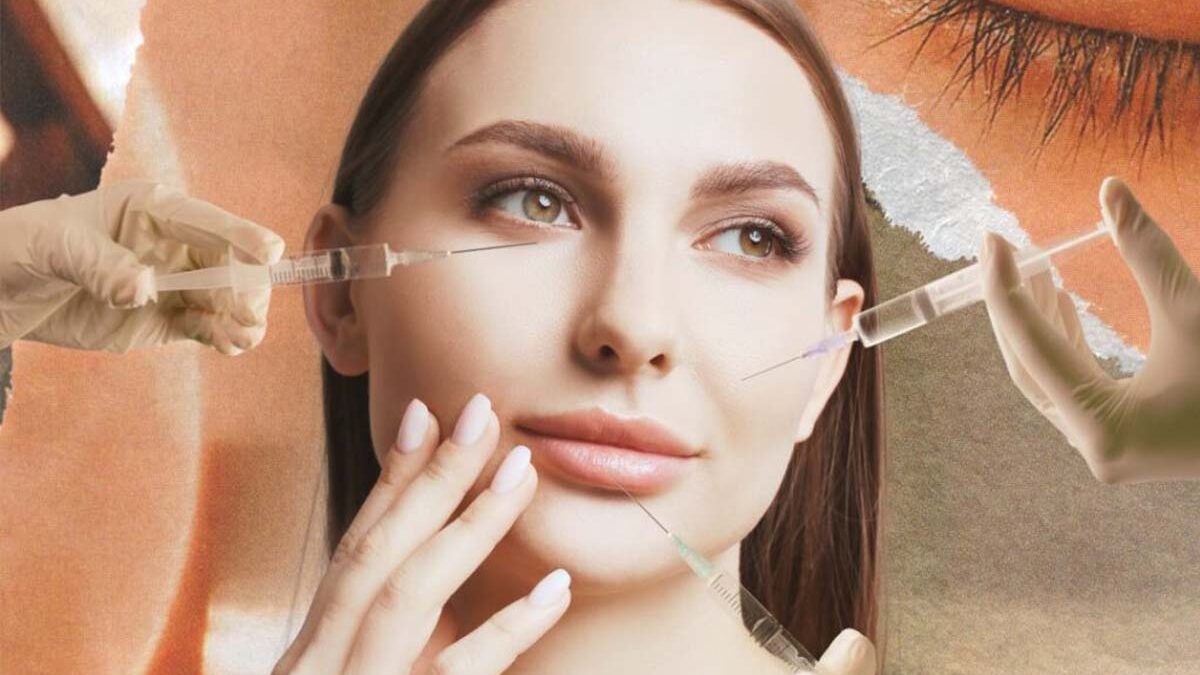
Fill Us In: Understanding Fillers And How It Can Work For You
Beautypreneur PH | Fill Us In: Understanding Fillers And How It Can Work For You | The Beauty Edit – When you scroll through social media, you might be convinced that all these influencers and celebrities have been untouched by time with their seemingly ageless faces and perfectly plump lips (usually achieved with a swipe of a filter). But while filters can create the illusion of being effortlessly youthful, there’s a growing trend in aesthetics that can give you natural-looking results: dermal fillers.
While aging is inevitable, dermal fillers have become a popular choice for combating the visible signs of aging and achieving a natural-looking rejuvenation, but with so much information available, it can be overwhelming to know where to start. If you’re considering dermal fillers, this guide explores the options to see if they’re right for you.
What are fillers?
Dermal fillers are injectable gels made from different substances, most commonly hyaluronic acid, which are designed to add volume, smooth wrinkles, plump lips, or sculpt facial features to restore a youthful appearance. Unlike Botox, which relaxes the muscles to reduce wrinkles and creases, fillers work by plumping up the skin for a more supple and rejuvenated appearance.
Types of Fillers
With various types of dermal fillers out there, you can really tailor your treatment to match what you’re looking for in terms of your appearance goals and preferences. Each filler is designed to target specific areas of the face and address particular skin issues.
1. Hyaluronic Acid (HA) fillers
Hyaluronic acid is a natural substance found throughout our bodies, including the skin, and the most popular type of filler. It plays an important role in keeping the skin hydrated and plump by attracting and holding onto water molecules. Popular brands of HA fillers include Juvederm, Restylane, and Teoxane.
“The advantage of HA in general, is that hyaluronic acid fillers are very, very safe because of the nature of HA. We already have that in our body since we were young,” says Nikki Tang, CEO of Teoxane’s exclusive Philippine distributor, DMark Beauty. “That’s why babies are cute. [They are] plump, right? But as we grow older, hyaluronic acid slowly depletes in the same way as collagen, and [that is where HA fillers come in:] to compensate or supplement the amount of hyaluronic acid and even collagen that depletes from our body.”
Hyaluronic acid fillers are the most common type for lip augmentation. The wide range of HA filler consistencies can create subtle or dramatic enhancements. You can achieve a subtle definition of the lip border, build volume for fuller lips, reduce wrinkles and lines around the mouth area, or even correct asymmetry.
2. Calcium Hydroxylapatite (CaHA) Fillers
This type of filler is made from calcium hydroxylapatite, a naturally occurring mineral found in bones. CaH fillers are thicker than HA fillers and are a good option for people who want to address moderate to deep wrinkles and folds, like nasolabial folds (smile lines), and add volume to areas that have lost their fullness due to aging, like cheeks and temples. They can also improve the appearance of acne scars. Radiesse is a well-known brand of CaHA filler.
3. Poly-L-lactic Acid (PLLA) Fillers
Unlike fillers that simply add volume, PLLA works by stimulating your body’s natural collagen production. Collagen, the most abundant protein in the body, provides structure and support to your skin, so more collagen leads to plumper and younger-looking skin over time. PLLA is broken down by the body slowly, so the effects develop gradually over a few months, but this can actually be a plus for those who prefer a subtle and more natural-looking change.
Sculptra, a popular brand of PLLA fillers, was first approved by the FDA in 2004 to treat fat loss in the face caused by antiretroviral therapy in patients with HIV. It eventually received an expanded FDA approval to treat wrinkles and folds on the cheeks for a more lifted and youthful appearance. This broader approval allowed it to be used in cosmetic procedures beyond treating the specific effects of HIV medications.
4. Polymethylmethacrylate (PMMA) Fillers
These types of fillers are best known for providing long-lasting results. PMMA fillers are composed of tiny microspheres suspended in a collagen gel. Once injected, the collagen gel provides immediate volume, filling out wrinkles and folds and adding fullness to areas that have lost it, while the PMMA microspheres help the body produce its own collagen. Over time, the collagen gel gets absorbed by the body, but the PMMA microspheres remain, which allows it to provide long-lasting results.
PMMA fillers are effective for treating deep lines like nasolabial folds (smile lines) and acne scars, and can also correct facial contours and imperfections. They also add volume to areas like the cheeks, the nose, lips, the chin, and around the mouth.
PMMA fillers are considered semi-permanent because the PMMA microspheres remain under the skin. While the collagen gel may eventually be absorbed, removing the PMMA microspheres can be more challenging and can require additional procedures.
Essential Questions To Ask About Dermal Fillers
How long do fillers last?
Fillers don’t last forever. It usually depends on the type of filler used. For instance, HA fillers typically last up to 12 months. CaHA fillers also last around 12 months, while PLLA fillers can last up to two years. PMMA fillers, on the other hand, are known for being semi-permanent, with results lasting up to five years.
But even within the same type of filler, brands can also have slight longevity differences. For example, Teoxane fillers can last up to 18 months, according to Junn Jalla, Teoxane Business Unit Head for Medical Devices. Other HA filler brands like Juvederm can last up to 24 months with the help of touch-ups at 12 months.
Can fillers last longer than the intended results?
While some permanent fillers do exist, these are not necessarily the best choice. And while longevity might seem appealing, there can also be instances where the fillers may linger longer than expected. Not to mention, if the placement isn’t ideal, its removal becomes more complex.
“There is such a thing as permanent fillers,” shares Tang. “These are the types that will last long but it doesn’t not necessarily mean that these are better options. Sometimes, when the filler is put improperly, then it can become more difficult to remove,” says Tang.
What factors influence how long fillers last?
“Lifestyle is one,” says Tang. Certain habits can accelerate the breakdown of fillers, such as smoking, excessive alcohol consumption, and poor dietary habits. On the other hand, making healthy choices like staying hydrated, avoiding UV exposure, and eating a balanced diet can help create a better environment for your fillers to thrive and extend the time you enjoy their results.
But it’s not just about your habits; Tang points out that the filler’s formulation also plays a crucial role because of its strength and stretch. “Stretch means it follows the natural dynamics and movements of the face. And strength is the longevity of the filler,” explains Jalla.
What are my options if I want to reverse or adjust my fillers?
“There is this enzyme which can melt down if we have an overcorrection or an overly done face,” shares Jalla. “You can melt it down with hyaluronidase. It’s an enzyme which can break down hyaluronic acid.”
But unlike HA fillers that can be dissolved with hyaluronidase, longer-lasting fillers like PMMA require surgery to remove them. For other types like CaHA, there still isn’t a specific agent that can directly dissolve them.
How important is the injector’s skill and experience when getting dermal fillers?
When it comes to dermal fillers, a skilled and experienced injector is just as important as the filler itself. Plus, a clinic’s reputation for excellence in fillers can be a strong indicator of injector skill. For example, the Aivee Clinic has been recognized for five consecutive years with Teoxane’s Most Dynamic Award for their use of Teosyal fillers.
Skilled injectors, like those found at clinics consistently recognized for their expertise in fillers, have a keen understanding of facial anatomy, so they know how to strategically place fillers to enhance your natural beauty and not drastically alter your features.
“[Skilled injectors] see a lot of patients so they understand the different cases of the face and they don’t change [it]. They don’t alter how you look, so it’s more about enhancing. Therefore, you look natural. You will always keep yourself looking good, looking young,” says Tang. “And it’s important also for a physician to be very sharp… to preserve your look—your natural look, but at the same time help you delay aging.”
Another crucial aspect was highlighted by Tang: deep knowledge of the fillers themselves. Not all fillers are created equal, so some brands have more diluted fillers, which means these can appear less effective initially.
“That’s why the doctors must be properly trained. They need to understand the nature of the filler, the hyaluronic acid. Because some brands have more diluted fillers, which means it is more watery; while some brands’ have less diluted fillers. So it means when you inject, what you see is what you get. Sometimes, when a patient goes to a doctor, [they say] ‘Doctor, it’s like there’s no effect, it’s not enough’ and the [doctor will have to] correct it,” explains Tang.
“They can [end up doing] under-correction (injecting too little filler) or overcorrection (injecting too much filler). This is why the doctor has to be very knowledgeable about the characteristics and natures of all the different fillers,” she adds.
Related Posts
Recent Posts
Categories
- Advocacy (53)
- Beauty and Science (120)
- Beauty Buzz (2)
- Entrepreneurship (72)
- Lifestyle and Travel (66)
- Parenting (17)
- Podcast (13)
- Press (156)
- Rotary Club Newsletters (13)
- TatlerTalks (3)
- Through My Virtual Screen (3)
- Two For the Road (23)
- Uncategorized (3)



